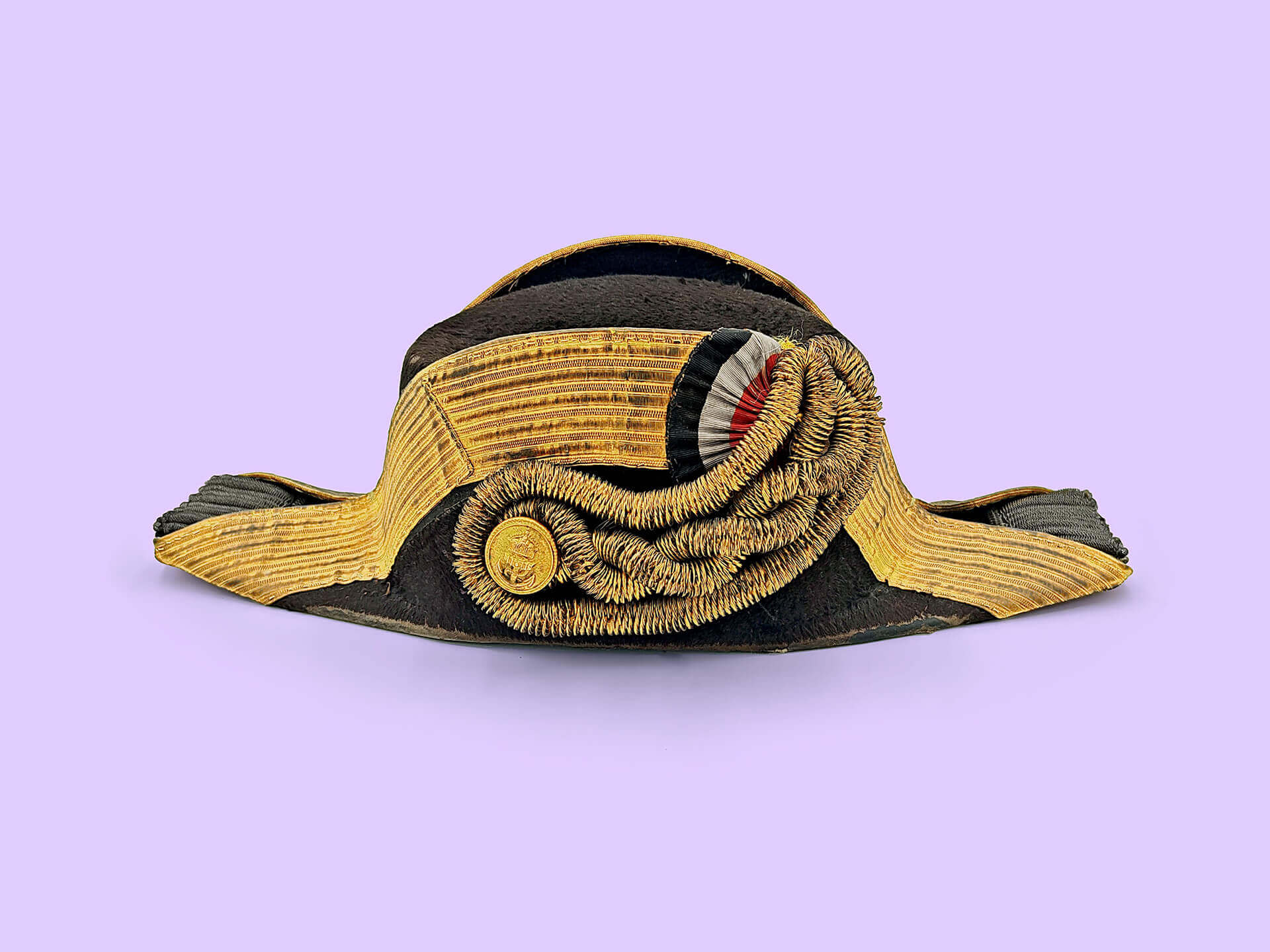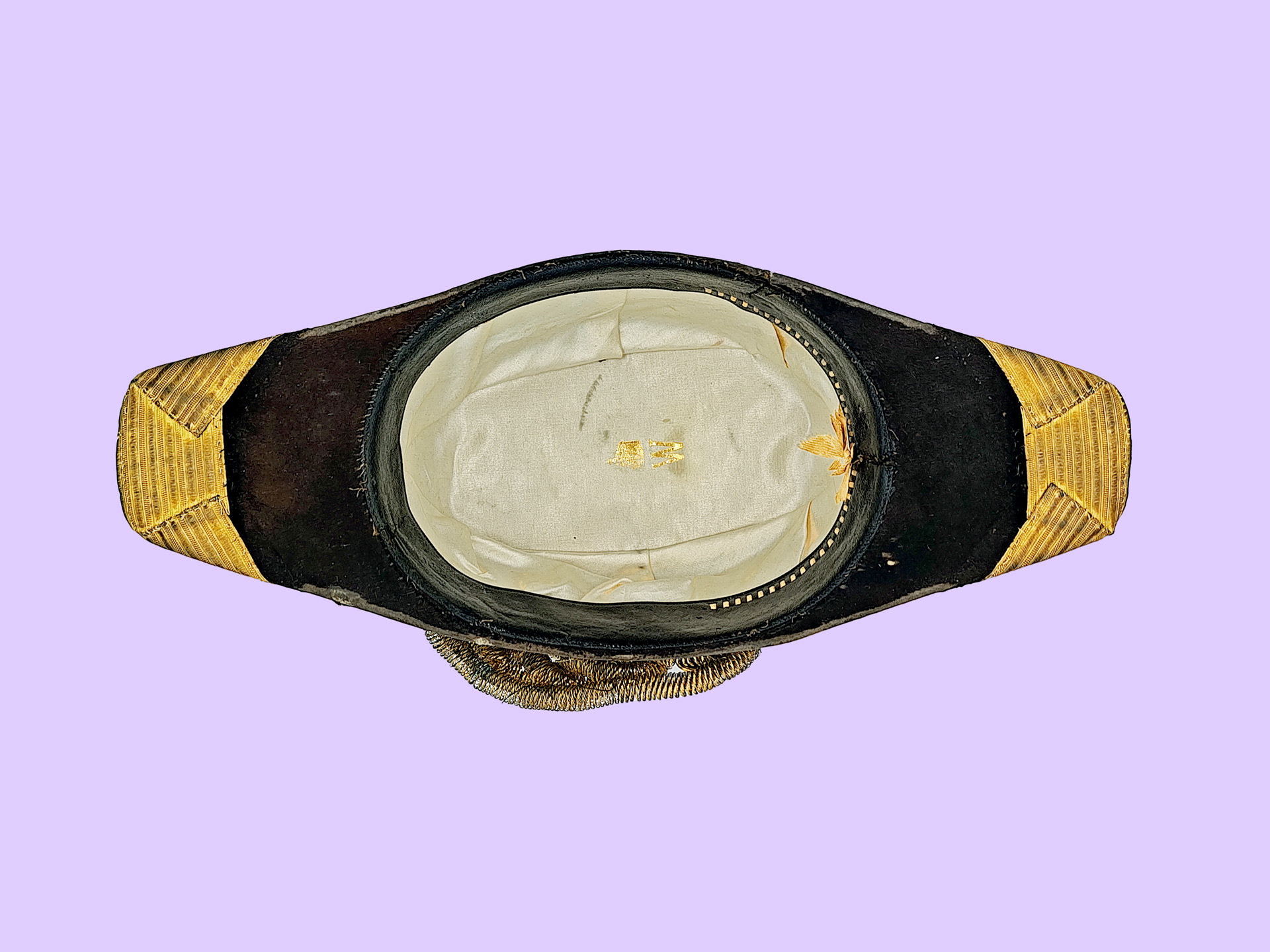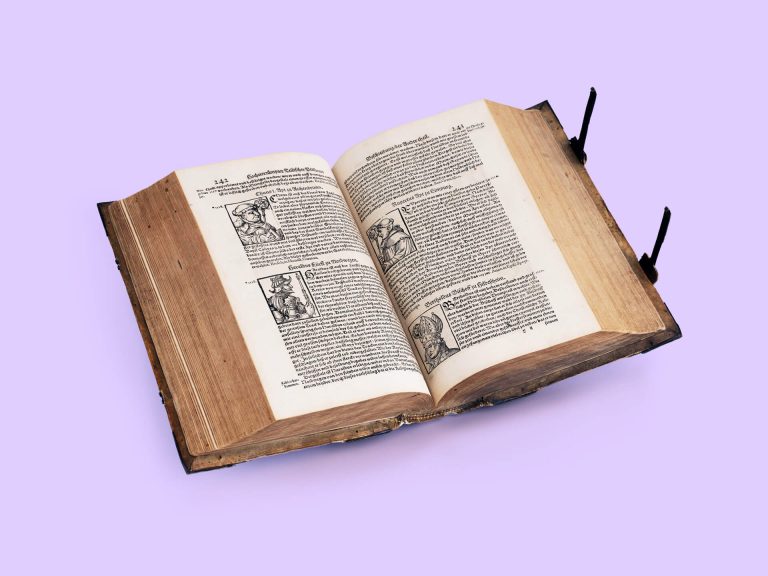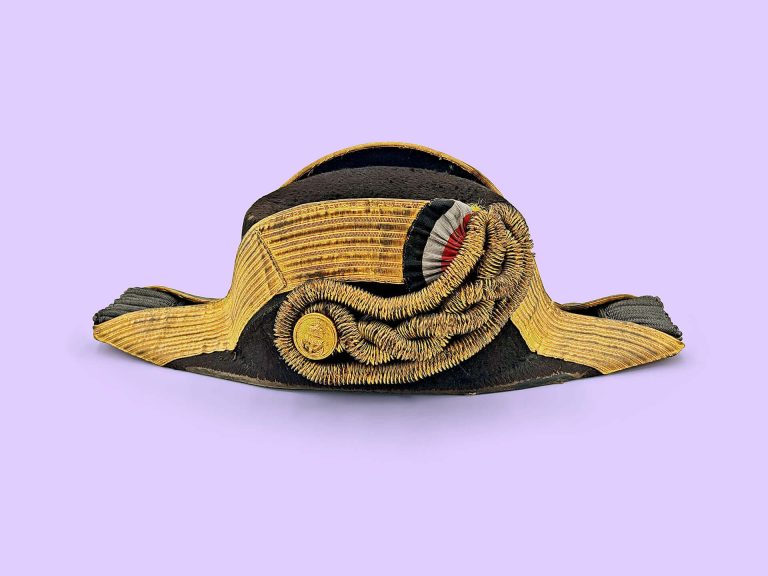The Emperor’s clothes: William II and his uniforms
Photographs of William II before his abdication usually show him in military uniform; there are few examples of him wearing civilian clothing. The Emperor had an extensive wardrobe of uniforms from various regiments and services of both the German Empire and foreign military units. As was customary in the late 19th century, William wore the military uniforms of the country that he visited. There are however no photographs of William II wearing a French uniform; he did not wish to honour Prussia’s “hereditary enemy”.
William II, a naval enthusiast since childhood, can often be seen wearing the uniform of an admiral of the German Navy; this was one of the Emperor’s favourite outfits. It is therefore no surprise that the admiral’s bicorne worn by William II and exhibited in the Deutschlandmuseum shows signs of heavy wear.
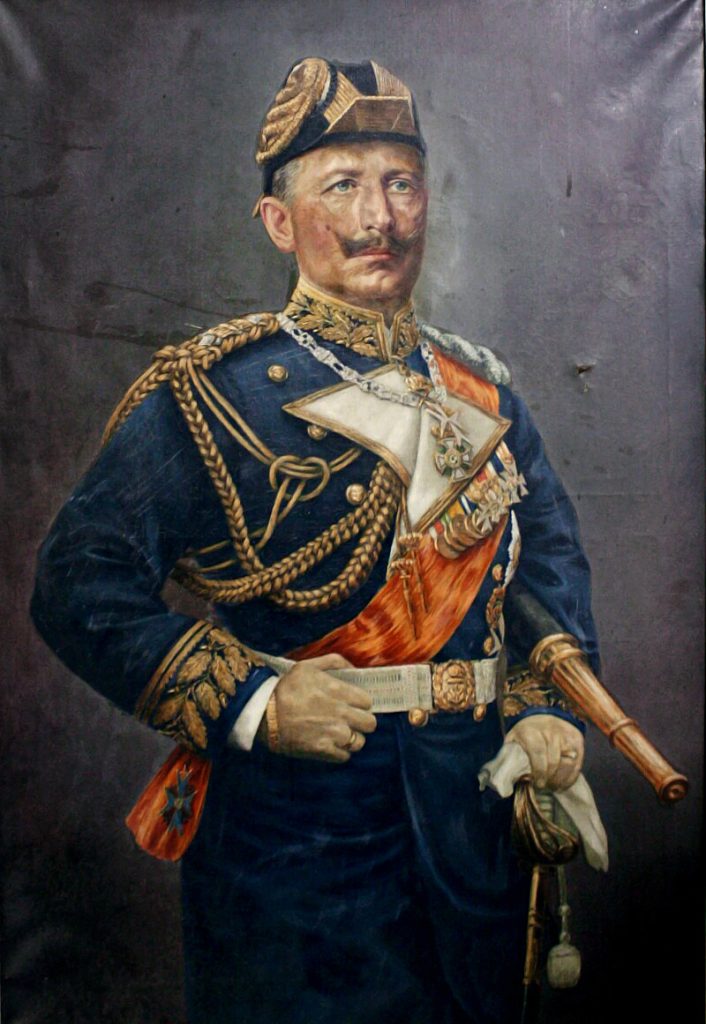
William II in admiral’s uniform Painting by Carl Schleusing, 1909 (Source: Drilandmuseum Gronau, CC BY-NC-SA)
William’s bicorne
The bicorne hat for admirals of the Imperial Navy consists of a black felt trim with a wide border of gilded metal thread embroidery. The imperial cockade, a circular badge in the imperial colours of black, white and red, is displayed on the front. A knitted cord of metal thread braiding connects it to a gilded button embossed with the coat of arms of the Imperial Navy. Gilded metal thread braid tassels adorn the ends of the hat.
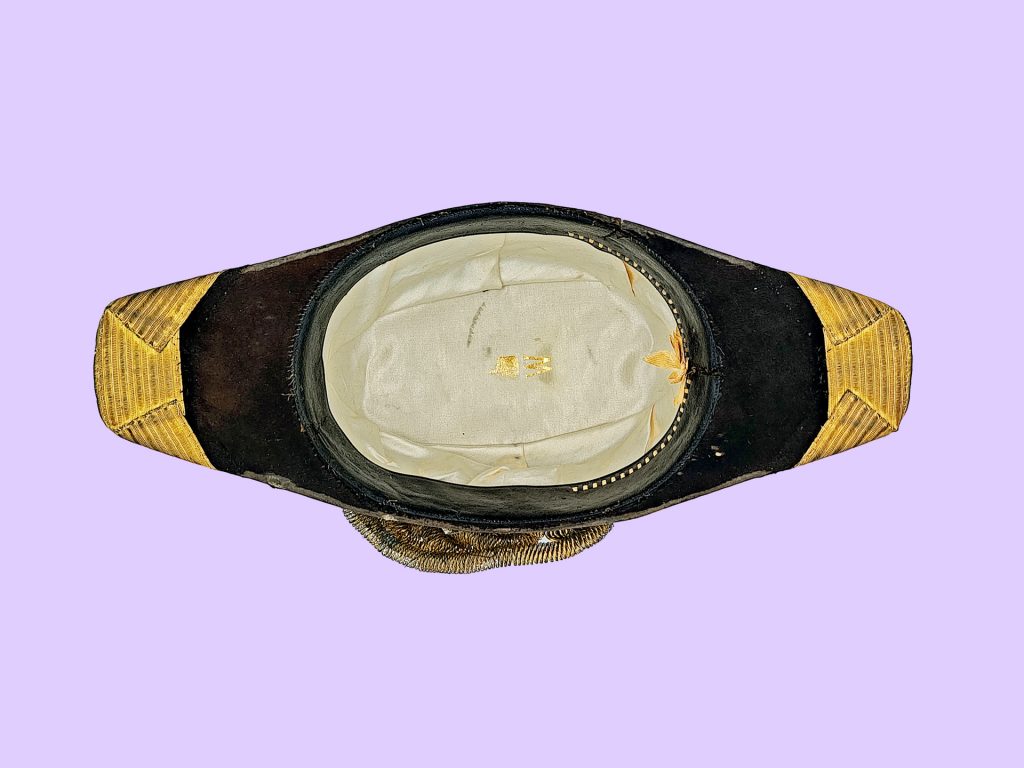
Interior view: gold embossing, leather strap and white silk admiral’s bicorne hat, 1890s, Germany (Source: Sammlung Deutschlandmuseum CC BY-ND 4.0 )
The inside of the bicorne features a black leather sweatband and an inner lining of the finest white silk. The cipher “W”, crowned with the imperial crown and embossed in gold, identifies the bicorne as the personal property of Emperor William II. As one of the favourite personal possessions of the last German Emperor, the bicorne is an exceptional and rare artefact.
“Germany’s future lies at sea!”
The German Navy gained an important supporter in the new Emperor. It was William himself who announced a new foreign and naval policy in 1896, declaring that “Germany’s future lies at sea”. Seeking to drum up support for the ambitious and expensive expansion of the German fleet, William was involved in a government programme of propaganda, designed to spread popular enthusiasm for the navy. One byproduct of these efforts was the widespread popularity of dressing children in sailor suits.
Advancing to become one of the largest and most modern fleets in the early 20th century, the German Navy threatened the dominance of the British Royal Navy. The resulting naval arms race played a significant role in intensifying political tensions in Europe and contributed to the increasing political isolation of the German Empire.
The progress of the First World War revealed the largely ineffective nature of the expensive new German fleet. Nevertheless, some of the measures involved in the new naval policy had a positive long-term effect: The 98-kilometre Kiel Canal, built in 1895 to establish a strategic connection between the North Sea and the Baltic Sea, is currently the busiest artificial sea route in the world and contributes to German prosperity.
Property information
Designation
- Date 1890s
- Gallery Imperial Germany
- Category Headgear
- Origin Germany
- Dimensions 40x11x17 cm (WxHxD)
- Material felt, silk, stitching
Property information
Designation
- Datierung 1890s
- Epochenraum Imperial Germany
- Kategorie Headgear
- Herkunft Germany
- Dimensionen 40x11x17 cm (WxHxD)
- Material felt, silk, stitching

About the Deutschlandmuseum
An immersive and innovative experience museum about 2000 years of German history
Reading tips and links
Lifesaver? The German Steel Helmet in the First World War
German Tank Museum Munster
Lifesaver? The German Steel Helmet in the First World War
German Tank Museum Munster
Share article
Other objects in this collection
Discover history
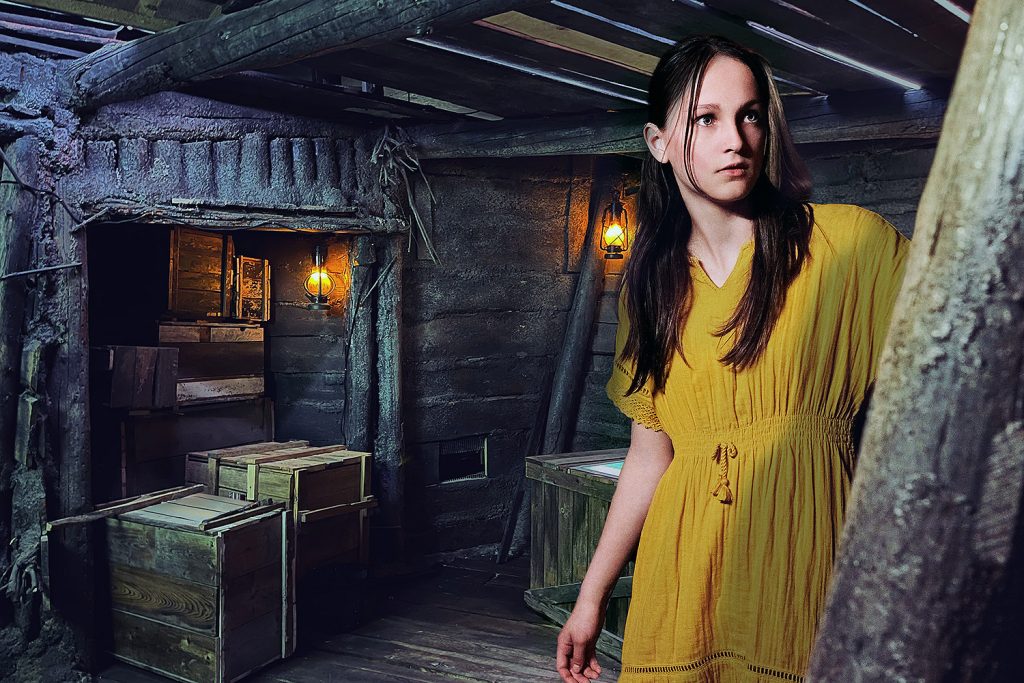
Visit the unique Deutschlandmuseum and experience immersive history
2000 Jahre
12 Epochen
1 Stunde

